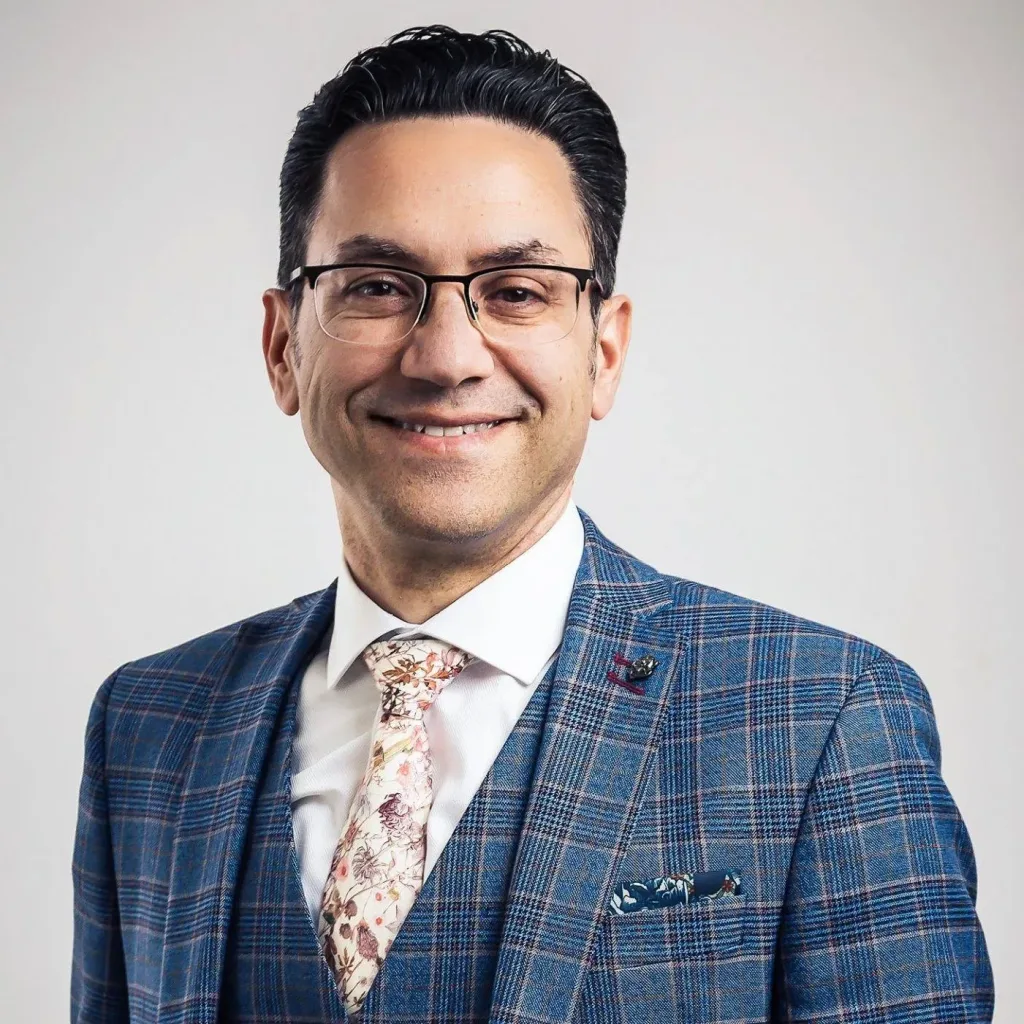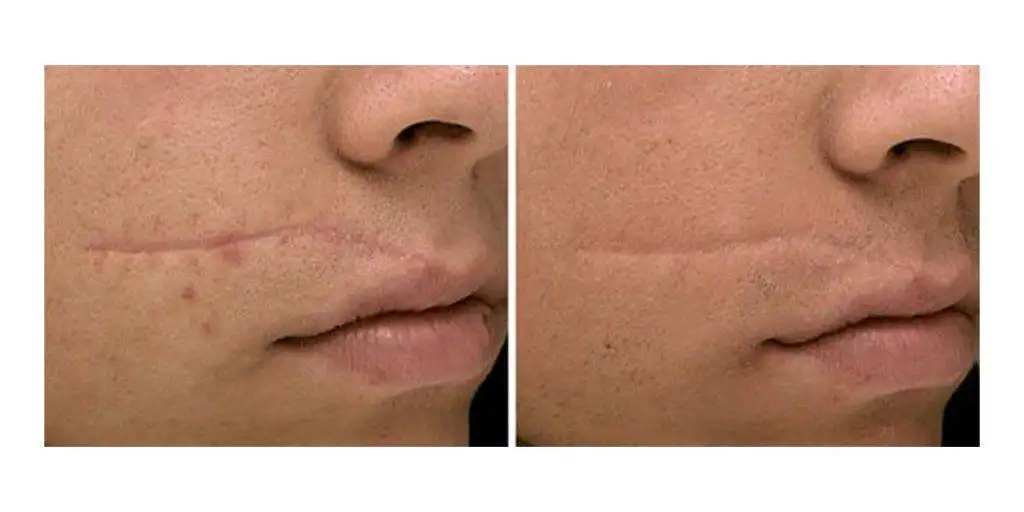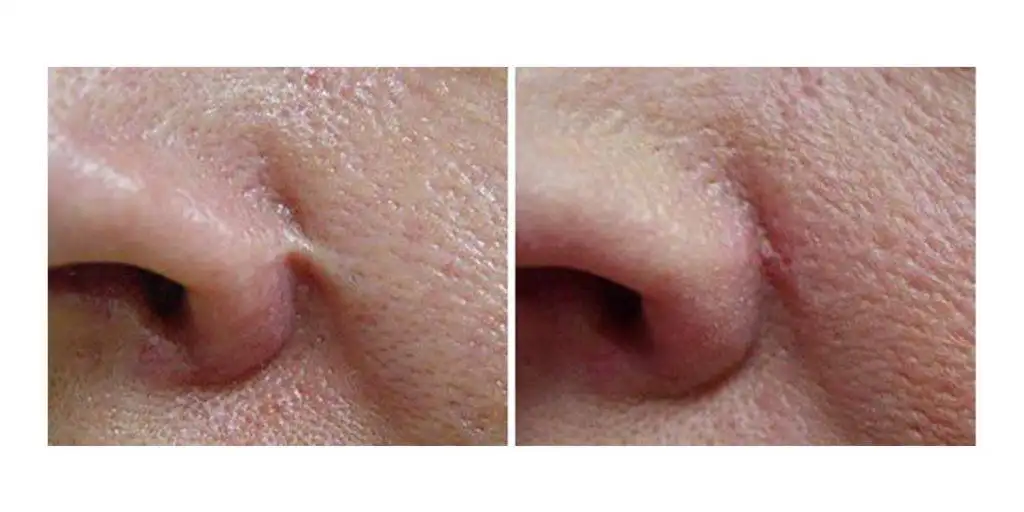Scars are a common issue that can develop anywhere on the body across a person’s life. Scars can vastly differ in appearance, with some being more difficult than others to camouflage with temporary solutions like make-up. For this reason, patients often seek longer-term solutions that can deliver more drastic results.
CREO Clinic’s laser scar removal in London offers a safe and effective means of minimising the appearance of scars by treating the damaged scar tissue and reducing the redness of the surrounding skin.
About Laser Scar Removal Treatments in London
At the CREO Clinic, our specialists use the state of the art Fotona laser to effectively reduce the appearance of scars. High intensity laser energy precisely targets the scar tissue, and patients can notice significant improvements in the appearance of their scars over time.
The Fotona SP Dynamis dual wavelength laser combines the power of the Erbium-YAG and Nd:YAG lasers for the enhanced treatment for a range of different types of scarring including acne, hypotrophic, atrophic and keloid scarring.
At the CREO Clinic, we offer a vast range of doctor-led laser scar removal treatments using the Fotona laser. Our team of expert clinicians provides bespoke, specialist laser treatment for the removal of scars.
Book a consultation with our aesthetics team today and find out how laser treatment can be adapted to effectively treat your scarring.
Before & After Images
Read Our Patient Reviews
How Does Laser Scar Removal Work?
The Fotona laser utilises an effective dual-wavelength approach to scar treatment, using both the non-ablative Nd:YAG as well as the fractional-ablative Er:YAG wavelengths to deliver dramatic results.
The high performance Er:YAG laser by Fotona uses Variable Square Pulse (VSP) technology to harness both cold ablative and non-ablative thermal methods that can be fine-tuned according to a patient’s exact needs. This laser delivers energy to the top layer of the skin to carefully vaporise the scar tissue without damaging the surrounding skin.
The Nd:YAG wavelength is used in tandem and perfectly compliments the Er:YAG laser to penetrate deeply into the skin, creating thermal effects. This helps to boost collagen production, helping the scars to fade and promoting the regeneration of healthy skin in its place.
What Types of Scars and Areas of the Body Can Be Treated?
There are many different types of scars that vary in appearance and prominence. Most importantly, different types of scars respond differently to laser treatment, so it’s important to correctly identify them:
- Acne scars – These form when acne breakouts (especially cystic or severe acne) penetrate deeper layers of the skin, causing damage to the beneath tissues. The Fotona Erbium-YAG laser is effective in the treatment of all different types of acne scarring, including ice pick, boxcar and rolling scars. In addition, the Fotona laser can also be extremely effective in the treatment of ongoing, active acne using a special protocol known as Twin Light.
- Hypertrophic scars – Thickened, raised scars around an injury, often caused by burns, piercings, cuts and occasionally acne. These typically flatten and fade over time. Laser treatment can help to flatten and lighten hypertrophic scarring, but usually works best when they are newly formed.
- Atrophic scars – Scarring that forms beneath the surface of the skin, forming an indented appearance. Atrophic or pitted scars are the most common form of acne scarring, but can also form from chickenpox or mole removal. These scars are difficult to treat but may require more than one type of procedure.
- Keloid scars – Develop when a scar continues to grow larger than the original wound and are caused by the presence of too much collagen in the skin. These scars are not dangerous but can be painful, itchy or may restrict movement. Laser treatments can help to reduce the pigment of a keloid scar, but won’t always reduce their size. At the CREO Clinic, we also offer steroid injections to help with the treatment of keloid scarring.
Through the use of the dual-wavelength Fotona laser, comprehensive treatment can be delivered that removes the surface scar tissue while promoting collagen production for healthier skin rejuvenation in its place.
How Many Sessions Will I Need?
The number of sessions of laser therapy will depend on a range of factors, including the extent and type of scarring you wish to treat. In general, these sessions should be spread 4-6 weeks apart.
During your 1-to-1 consultation with our specialist, a plan for treating scars
will be created according to your particular needs, including the number of recommended sessions.
What Is the Recovery Period Like?
Downtime from laser treatment is minimal, meaning you should be able to return to daily activities immediately. However, you should avoid wearing makeup and sun exposure for at least the first 24 hours after your treatment.
Who Is a Good Candidate for Laser Scar Removal?
Patients who wish to improve the appearance of their scarring, and are generally in good health, are good candidates for laser scar treatments.
Individuals who are interested in acne scar treatment should have a majority of their active acne under control. Before undergoing any acne scar treatments, it is important to speak with a medical professional about whether your skin is ready for scar treatments.
During your initial consultation, a patch test will be completed to determine your suitability for laser scar removal, and to design a bespoke laser treatment plan to match your equally unique needs.
Why Choose CREO Clinic for Laser Scar Removal
As a plastic surgery clinic, we routinely deal with scarring as a result of the procedures we carry out. For this reason, we collaborate with leading clinicians in the UK to ensure our patients are able to receive the best possible aftercare treatments to minimise the appearance of scars.
The CREO Clinic is therefore proud to offer treatments using the innovative, dual-wavelength Fotona laser to safely and effectively treat scarring of all kinds and sizes, including post-surgical scarring.
Our specialists have successfully performed countless scar treatments using this technology, and will work diligently with you to design a tailored treatment plan right for your scarring concerns. In doing so, patients are able to see dramatic results and radiate confidence in the skin they’re in.
How Much Do Laser Treatments for Scar Removal Cost?
The exact cost for laser scar treatment in London can vary depending on the severity of scarring and how many sessions are required for effective treatment. Therefore, you will only be provided with an accurate quote following a 1-to-1 consultation with our laser specialist who will diligently design a bespoke treatment plan for your unique needs.
In general, prices start from £490 for early scar management, and £550 for small areas. For more significant scarring across the face, laser resurfacing starts from £1,950, with the price starting from £2,950 for both the face and neck.
Frequently Asked Questions
How long does the procedure take?
Is laser scar removal painful?
How soon will I recover after the treatment?
Are there any risks or side effects?
Alternative Scar Removal Procedures
Plastic Surgery
Surgery is an alternative treatment to laser scar treatment to manage (or fully remove) more extensive scarring. At the CREO Clinic, we offer a range of surgical solutions for patients seeking more radical treatment for scarring. These include:
- Excision and closure of wide stretched scars
- Surgical release of indented tethered scars
- Steroid injections for hypertrophic or keloid scars
However, as these require more invasive techniques, the downtime and recovery period is more significant compared to laser treatment.



